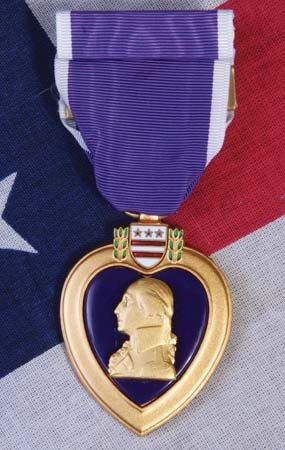Purple Heart
- Related Topics:
- United States
- Notable Honorees:
- John McCain
- Oliver Stone
- John Kerry
- Eric K. Shinseki
News •
Purple Heart, the first U.S. military decoration, instituted by General George Washington in 1782 and awarded for bravery in action. The records show that only three men received it during the American Revolution, all of them noncommissioned officers. Two of these coveted badges still exist. The original medal, sewn onto the coat, was simply a purple heart-shaped piece of cloth edged with silver braid. Although this was the medal of honour of the Revolution, it seems to have been forgotten for about 150 years. The 200th anniversary of Washington’s birth marked the revival of the award (February 22, 1932).
The current purpose of the medal is as an award for those wounded or killed (awarded posthumously) in the service of their country. An Oak Leaf Cluster is granted to a member of the U.S. Army or Air Force who has been previously wounded and who already has a Purple Heart, and a Gold Star is awarded to a member of the Navy, Marine Corps, or Coast Guard for the same purpose.
Perhaps one of the most beautifully designed of all U.S. decorations, the medal is a purple heart-shaped badge with bronze edges that depicts a profile relief bust of Washington in the uniform of a general in the Continental Army. The reverse side bears the inscription “For Military Merit” with the recipient’s name below.












